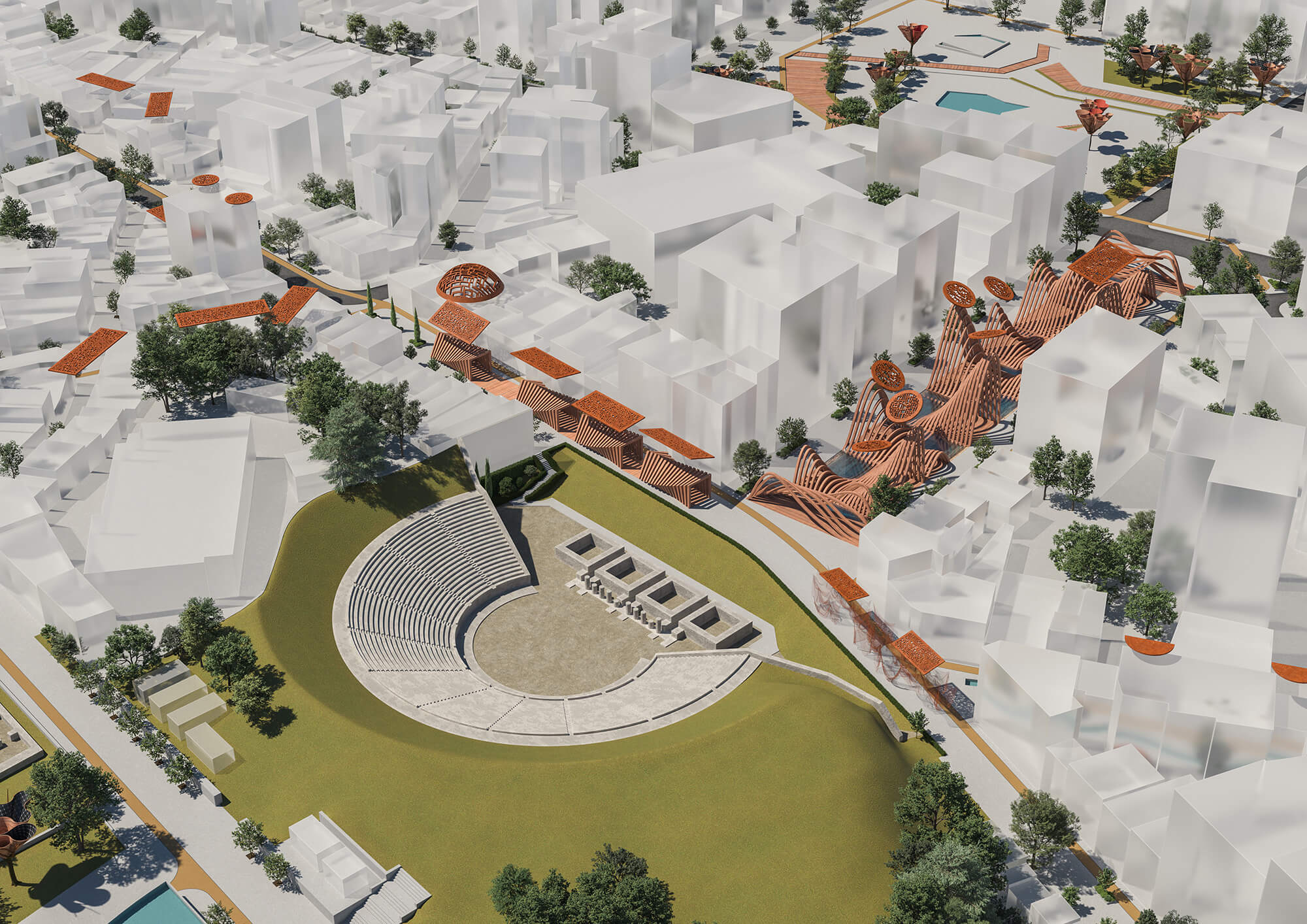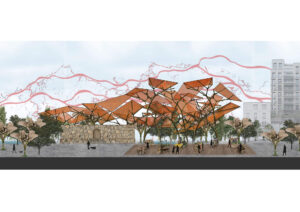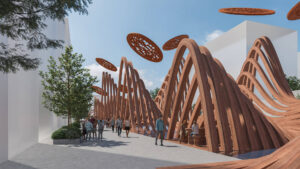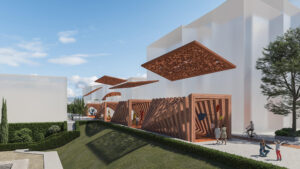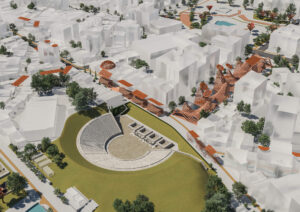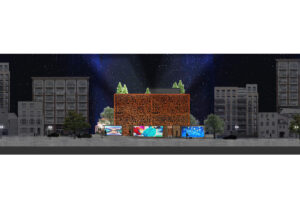Combining architecture with the morse code, our urban development plan for the “International Ideas Competition for the Design of the Surrounding Area of the Ancient Theatre A’ of Larissa” revolves around the creation of a crossed morse path created through the introduction of follies and parasitic architecture which feature structures of various uses all aiming to position the city of Larissa on the international scene by reviving its old allure and setting the foundations for the development of its new character, while adopting numerous environmentally friendly strategies.
Alongside entries from architectural firms from all over the world, the Chωros Sifakis Architects team participated in the “International Ideas Competition for the Design of the Surrounding Area of the Ancient Theatre A’ of Larissa”. Endorsed by the UIA and conducted according to the UNESCO regulations, the competition intends to elevate and transform Larissa’s existing urban fabric while highlighting the Ancient Theatre A’ and placing the city on the global map.
Our team’s submission for the competition revolves around the introduction of a unique architectural language presented through a new visual experience where the morse code interweaves into architecture. The fusion of the architectural language with the morse code combines their universal characters, aiming to create a global scheme which will act as a constant regardless of world conditions ie. weather, war pandemics.
The design concept of our urban development plan centers upon four main pillars; a morse code cross pathway, parasitic architecture, follies instead of dense structures and the diffusion of the river Pineios throughout the city center. Through the aforementioned we aim to visually unify the new with the existing urban fabric, to foster a direct relationship between structure and person whilst blurring the boundary between landscape and infrastructure, as well as to set a new landscape identity for Larissa by making the water element prominent throughout the whole city center on both a horizontal and vertical plane.
Our strategy unfolds along a crossed path which, having the Ancient Theatre A’ as its point of intersection, stretches across the city center. Its paths reading “World Monument” and “UNESCO Heritage” respectively, the cross intends to unify the city’s main landmarks, embarking the visitors on a journey of “follies” through historic monuments, educational programming, cultural attractions and recreational activities. All elements featured along the crossed path aim in the creation of an environmentally conscious development plan, which includes the decontamination of Pineios, the use of locally collected and outsourced recycled materials such as corten steel and rammed earth, the introduction of cycling lanes to restrict vehicle use as well as the introduction of a “fake forest” across the whole city which replicates the appearance and properties of natural trees, through a man-made design.
Re-inventing the identity of one of the oldest continuously inhabited cities in the world and using it as a blueprint for future city development is ultimately the key vision for our scheme’s storytelling which aims to establish an ever-changing ageless narrative able to “keep the city alive” for many centuries to come.



